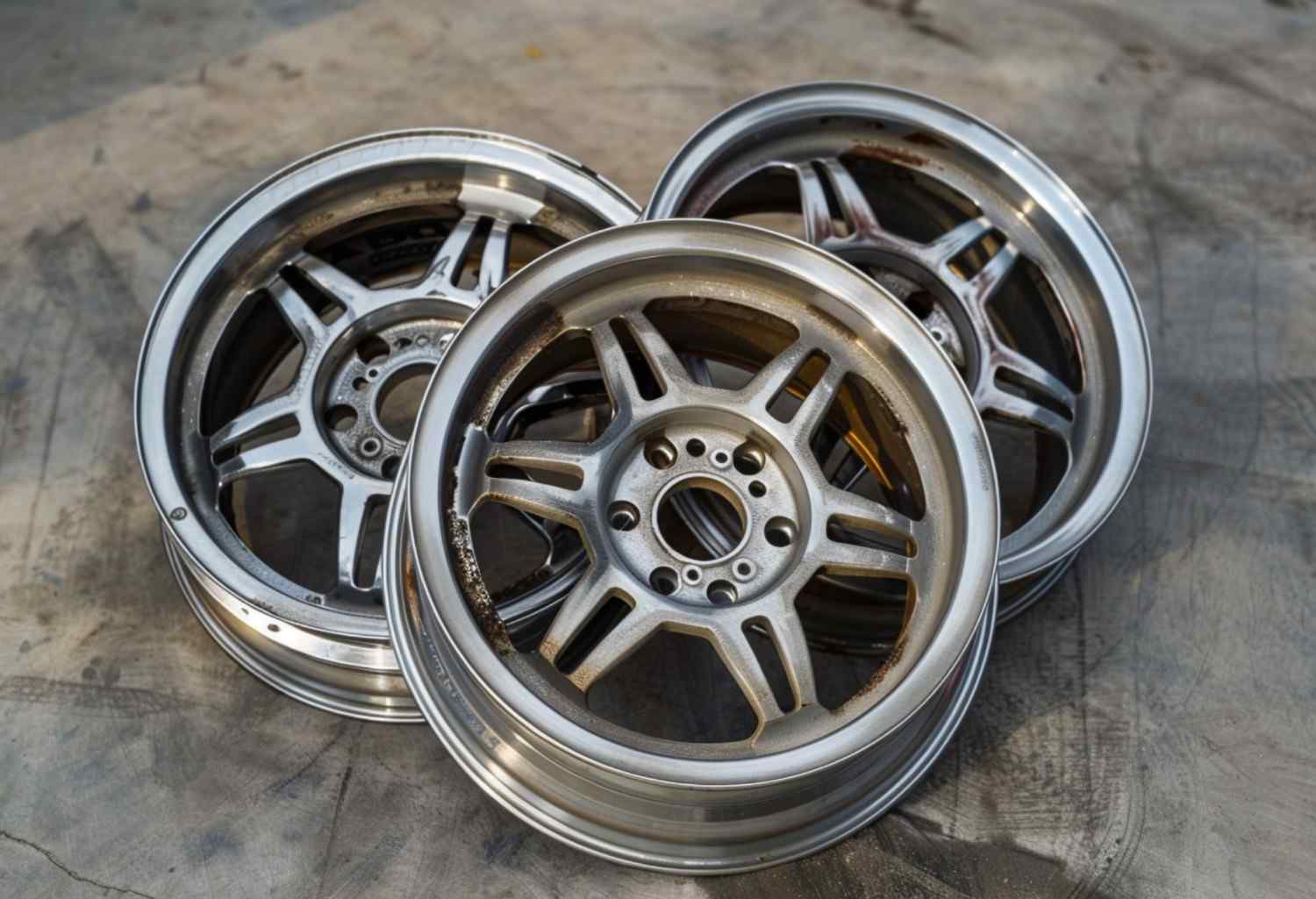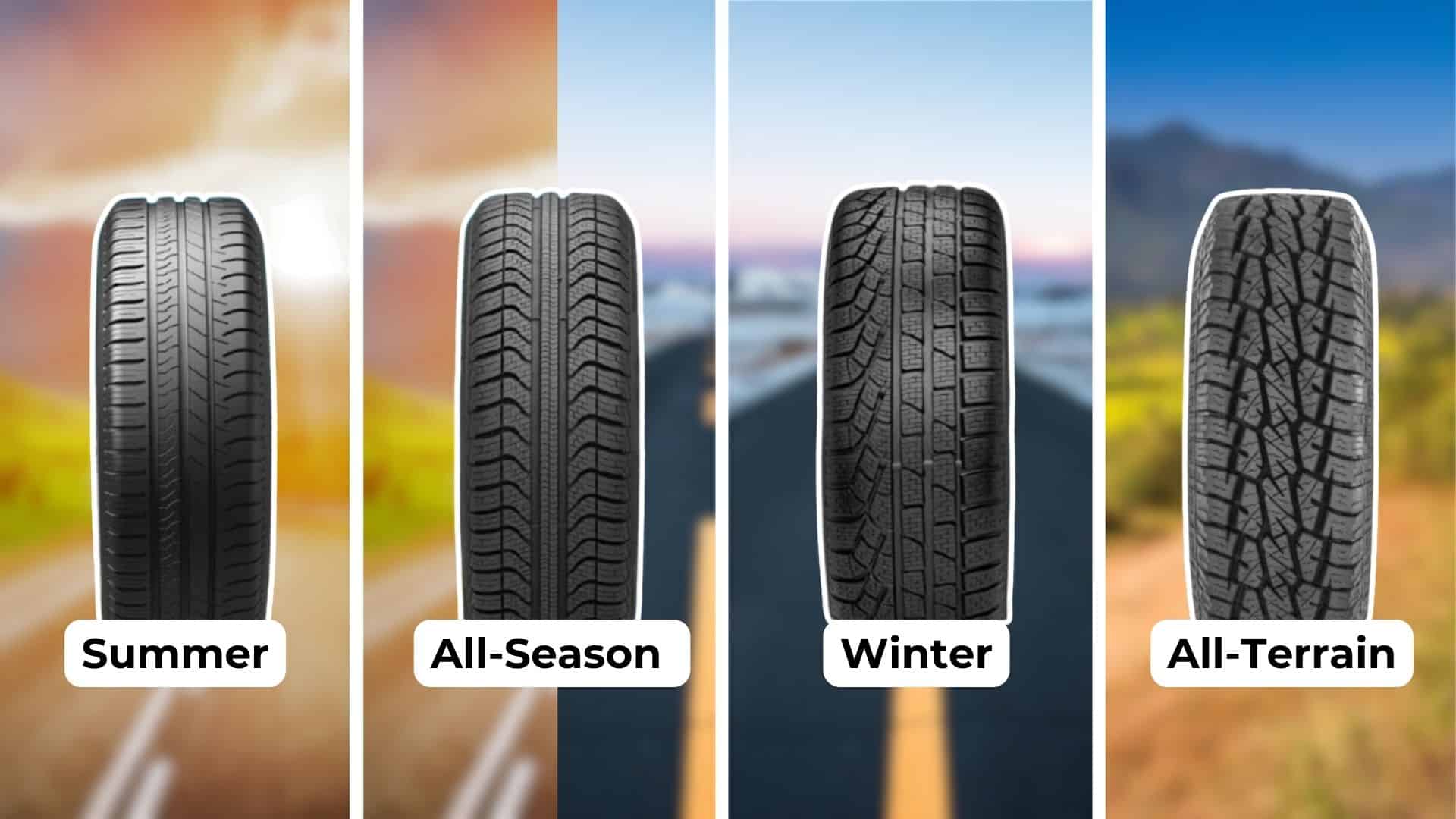In this post, we’ll explore the essential differences between wheels and tires, two crucial components of your vehicle.
As someone who has worked in the automotive industry for over a decade, I’ve seen countless instances where people use these terms interchangeably, causing confusion and misunderstandings.
By clearly understanding the distinctions between wheels and tires, you’ll be better equipped to make informed decisions when maintaining or upgrading your vehicle.
We’ll cover each component’s fundamental aspects, their roles in vehicle performance, and how they work together to provide a safe and comfortable driving experience.
Let’s dive in and clear up any misconceptions about wheels and tires.
Definitions and Basic Concepts of Wheels and Tires
Wheels
At their core, wheels are essential to a vehicle’s mobility system. The complete metal structures include the rim (the outer edge) and the hub (the central part), which are directly mounted onto the vehicle’s axle.
Wheels are critical in supporting the vehicle’s weight, enabling smooth rotation, and providing a secure base for the tires to be fitted onto.
Tires
Tires are the rubber casings that wrap around the wheels. Their main purpose is to offer traction, gripping the road surface to ensure stable and controlled vehicle movement.
Additionally, tires help absorb shocks and vibrations caused by uneven road conditions, resulting in a more comfortable and safer driving experience for passengers.
Material, Structure, and Types of Wheels
1. Steel Wheels

- Aesthetics: Steel wheels are often less visually appealing than alloy wheels. Steel wheels are commonly fitted with hubcaps or wheel covers to enhance their look, providing a more polished and attractive finish.
- Durability: They are designed to withstand tough conditions and are less likely to crack or break under impact. This makes them a popular choice for vehicles frequently traveling on rough roads or in areas with poor road conditions.
- Cost: Steel wheels are generally more affordable than alloy wheels, making them an attractive option for budget-conscious buyers.
2. Alloy Wheels

- Aesthetics: Alloy wheels are known for their sleek and modern appearance, which enhances a vehicle’s overall look. They come in various designs, styles, and finishes, allowing car owners to personalize their vehicle’s appearance to suit their tastes.
- Durability: While alloy wheels are less robust than steel wheels in extreme conditions, they offer better heat dissipation properties. This is due to the superior thermal conductivity of the alloy materials used in their construction.
- Cost: Alloy wheels are typically more expensive than steel wheels due to their enhanced aesthetics and performance benefits.
Types of Tires: Seasonal Variations

1. All-season Tyres
All-season tires are designed to provide a balanced performance in various weather conditions, including light snow, rain, and dry roads.
They offer a convenient solution for drivers who prefer not to switch tires between seasons.
However, this convenience comes at the cost of specialized performance, as all-season tires may not excel in extreme weather conditions.
2. Winter Tyres
Winter tires are designed to handle cold temperatures, snow, and ice. They feature unique tread patterns with deeper grooves and specialized rubber compounds that remain flexible in cold weather.
These characteristics enable winter tires to maintain excellent traction and handling on snow-covered and icy roads, ensuring safer driving during the colder months.
3. Summer Tyres
Summer tires are optimized for warm weather conditions and perform exceptionally on dry and wet roads.
They are constructed using a softer rubber compound that offers superior grip and handling in higher temperatures.
The tread patterns of summer tires are designed to maximize contact with the road surface, enhancing traction and cornering stability.
Functionality and Performance of Wheels
1. Vehicle Handling
Choosing wheel material and design significantly impacts a vehicle’s handling characteristics. Steel wheels are generally heavier than alloy wheels, affecting steering responsiveness and overall agility.
Lighter alloy wheels reduce unsprung mass, allowing the suspension to react quickly to road irregularities and improving handling precision.
2. Smooth Ride
Wheel size and material rigidity play a role in ride comfort. Larger wheels with lower-profile tires tend to have a firmer ride, with less tire sidewall to absorb shocks and vibrations from the road.
Conversely, smaller wheels with taller tire sidewalls provide better shock absorption, resulting in a smoother and more comfortable ride.
3. Aesthetics Impact
Wheels are a prominent visual feature of a vehicle and can greatly influence its appearance. Well-designed alloy wheels can enhance a vehicle’s aesthetic appeal, giving it a more premium and sporty look.
Conversely, plain or damaged steel wheels can detract from a vehicle’s visual appeal, affecting its perceived value and resale potential.
Functionality and Performance of Tires
1. Traction
The tire tread design and rubber composition are crucial factors determining a tire’s traction capabilities.
Tread patterns featuring intricate grooves, sipes, and blocks help to channel water, snow, and mud away from the tire’s contact patch, maintaining grip on slippery surfaces.
The rubber compound used in the tire also affects traction, with softer compounds providing better grip in colder temperatures and on wet roads.
2. Vehicle Control
Tires play a vital role in maintaining vehicle stability and steering accuracy. The tire’s construction, sidewall stiffness, and tread design influence how well the vehicle responds to driver inputs.
A tire with good lateral stability and a responsive tread pattern will provide precise steering and confident handling, especially during sudden maneuvers or when navigating uneven road surfaces.
3. Safety
Tires are critical components in overall vehicle safety. Worn-out or damaged tires can severely compromise a vehicle’s ability to stop, turn, and maintain control, increasing the risk of accidents.
As tire tread depth decreases, stopping distances increase, especially on wet roads.
Tires with insufficient tread or structural damage are also more susceptible to blowouts, which can cause a driver to lose control of the vehicle.
Routine Maintenance Procedures: Wheel Checks
1. Alignment
Misaligned wheels can cause rapid and uneven tire wear, reducing tire life and affecting performance.
Have your wheels professionally aligned according to the manufacturer’s recommended intervals, or if you notice signs of misalignment, such as uneven tire wear or pulling to one side while driving.
2. Balancing
Unbalanced wheels can cause vibrations, uneven tire wear, and decreased ride comfort. If you experience vibrations or shaking, particularly at higher speeds, it’s likely time for wheel balancing.
Based on the manufacturer’s recommendation, get your wheels balanced by a professional during tire installation or as needed.
Tire Maintenance: Routine Procedures
1. Air Pressure
Regularly check your tire pressure using a reliable gauge and adjust it to the manufacturer’s specified levels, found in the vehicle owner’s manual or on a placard inside the driver’s door jamb.
Under-inflated tires can lead to decreased fuel economy, accelerated wear, and reduced handling.
In contrast, over-inflated tires may result in a harsher ride and an increased risk of damage from road hazards.
2. Rotation
Tire rotation involves moving tires from one position on the vehicle to another to promote even wear and extend tire life.
Regularly rotating your tires helps maintain balanced handling and traction. Consult your vehicle owner’s manual for the recommended rotation pattern and frequency, typically every 5,000 to 8,000 miles.
Common rotation patterns include front-to-rear, side-to-side, or a combination of both, depending on the vehicle and tire configuration.
Conclusion
In conclusion, understanding the key differences between wheels and tires is essential for maintaining your vehicle’s safety, performance, and longevity.
By recognizing each component’s unique roles and characteristics, you can make informed decisions regarding replacing or upgrading your wheels and tires.
Regularly inspect your wheels for damage and ensure your tires have adequate tread depth and proper inflation.
Investing in quality wheels and tires that suit your driving needs and conditions will enhance your vehicle’s appearance and provide a safer and more comfortable ride.
So, the next time you’re due for a tire change or considering a wheel upgrade, remember these crucial differences and make the best choice for your vehicle.
Your safety and your car’s performance depend on it!


